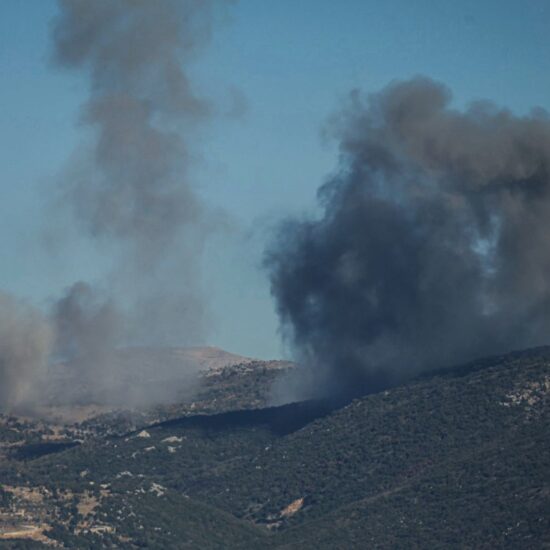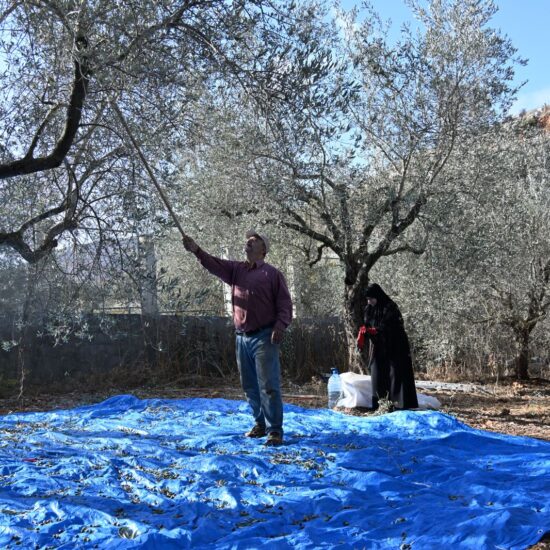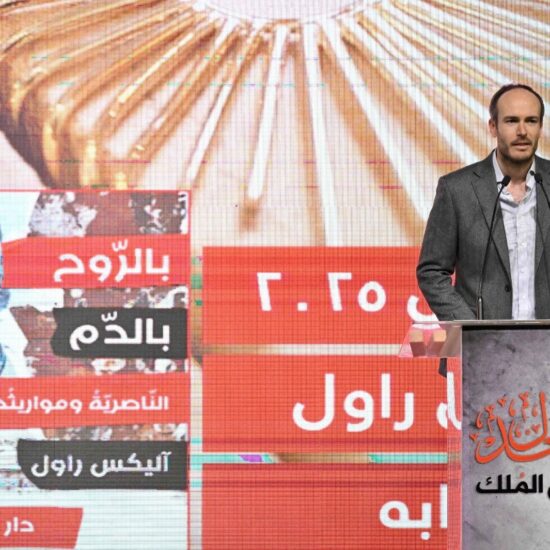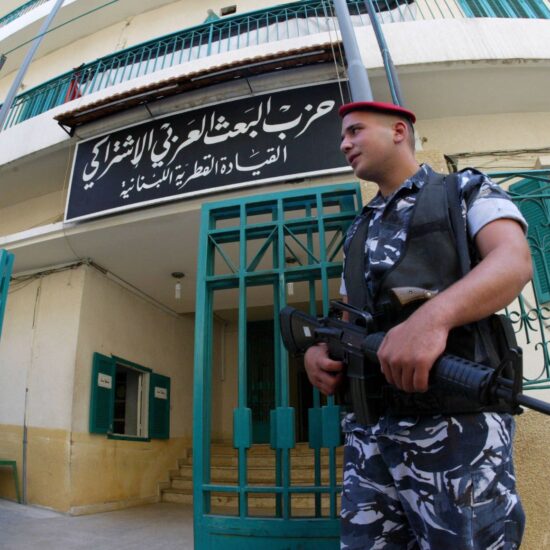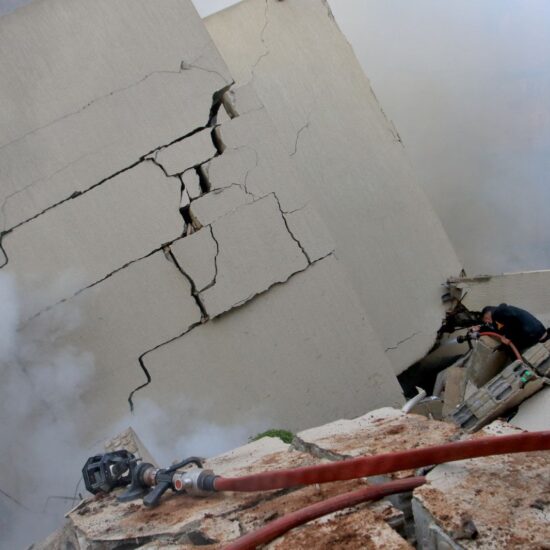
After being displaced across Lebanon for two months during the open war between Israel and Hezbollah, villagers have finally returned home. However, what they find is heartbreaking as entire towns have been destroyed, with buildings, homes, and shops reduced to rubble and dust. While there is initial joy in being back, marked by celebratory traffic jams and signs of victory, the reality they face is harsh and difficult
Last week’s cease-fire between Israel and Hezbollah in Lebanon has brought some temporary relief. However, the situation on the ground is much bleaker. Hezbollah is still counting its dead, its supporters are returning to destroyed towns and villages, and the World Bank estimates the war has caused $8.5 billion in damage and economic losses for Lebanon.
Most villages are draped in flags of the Amal Movement, a significant presence in the region, but predominantly with Hezbollah banners. This display of solidarity bolsters the narrative of a “great victory” proclaimed by the newly appointed Secretary General, Naim Qassem, even as the village remains in ruins.
The Israeli army has also imposed strict restrictions on residents in southern Lebanon. It has banned people from returning to 64 villages near the border, effectively displacing thousands. For those who have managed to return to areas south of the Litani River, a curfew has been enforced, limiting their movement from 5 p.m. to 7 a.m., which further complicates their daily lives and recovery efforts.
Some Hezbollah supporters have become frustrated with Iran and its network of armed groups, known as the “axis of resistance.” They feel let down, saying that these allies did not step in to help Lebanon during what has been its worst war in decades.
Agreed to speak with going by his first name only, Haidar, from Sour told NOW: “We believed we were part of a strong alliance, we always trusted Iran to support us but during this war, we feel let down.”
“We expected more help from Iran, both during the fighting and now, and now with the damage being massive, we are worried they won’t help us rebuild as even during the displacement crisis, little financial aid was received by families coming from Iran.
According to Haidar many of the supporters he knows have started to feel that they’ve been left to handle this on their own.
Iranian officials have promised to help Lebanon recover, according to their public statements. However, Iran has been struggling with many challenges, including years of U.S. and international sanctions and a worsening currency crisis. Because of this, it’s unclear if Iran has enough resources to help rebuild the large areas of Lebanon that were destroyed.
With steady hands but a heavy heart, Abou Hussein Farhat, the owner of a small café in Habboush Nabatieh, shoveled shattered glass and cleared piles of rubble told NOW: “It will take a long time to feel at home again, especially after witnessing the devastation caused by Israel to our friends and neighbours who many of them are gone or have lost everything in this war.” Abou Hussein is anxiously waiting for the South Council to visit and assess the support he needs to rebuild his café. It has been over two months without any income, and he hopes help will come soon.
Who is willing to rebuild?
The first month of Israel’s war on Lebanon caused a level of destruction not seen in a generation. Entire villages in southern Lebanon were blown up by the Israeli military, and the area of Dahiyeh in southern Beirut now stands as a skeletal ruin. Homes and businesses have been destroyed.
During the 2006 conflict, Israel caused $2.8 billion in damages in just 34 days of fighting, according to government estimates. However, the UN Development Program believes that the scale of destruction, the humanitarian impact, and the economic consequences in 2024 will be much worse than what was seen in the 2006 war, An article by The New Arab stated.
Caretaker Prime Minister Najib Mikati has called on the international community to help with rebuilding Lebanon. However, with economic losses estimated at $20 billion, there is a real concern that neither the global powers, who are frustrated with Lebanon’s slow-moving political system, and a collapsed economy, will be able or willing to cover the costs.
Reluctance from the Gulf
In the last war with Israel, Arab donors – in particular Saudi Arabia and Qatar – were central to building Lebanon, pledging $1.3 billion. Qatar rebuilt four towns, whilst Saudi Arabia rebuilt 25 villages in southern Lebanon, according to past media reporting, The New Arab reported.
Many Arab states wanted their support to show the Shia community that there could be a better political and economic future without relying on Hezbollah and Iran, explains Hassan Kotob, a Lebanese analyst and manager of the Lebanese Center for Research, in an interview with The New Arab.
However, this support strengthened Hezbollah by showing that “they could resist and that their homes would be rebuilt and their losses compensated,” said Kotob.
But for Kotob, don’t expect the Gulf countries to make that assessment this time.
Last week, French President Emmanuel Macron’s international conference in support of Lebanon raised $1 billion in pledges for humanitarian aid and military support – yet saw no financial commitment from the Gulf, The New Arab reported.
Relations between the Gulf countries and Lebanon have become tense in recent years. This is mainly because Hezbollah has clashed with Gulf powers like Saudi Arabia and the UAE. The tension grew especially after Hezbollah openly supported the Houthis during Saudi Arabia’s 2015 military intervention in the Yemeni civil war.
As soon as the truce was announced, thousands of people returned to find their homes or businesses damaged or completely destroyed. This is happening as temperatures are dropping, and many families don’t have enough resources for heating. To rebuild, some are forced to rent temporary homes or move in with relatives, which adds more financial strain to their already difficult lives.
Local analysts believe Hezbollah will face significant pressure to take care of the social and economic needs of its Shia community supporters. This is crucial because Hezbollah’s strength and survival depend heavily on the loyalty and backing of this community.
Without their continued support, the group would struggle to maintain its influence and existence.
Rodayna Raydan is a Lebanese-British journalist. You can follow her on Twitter @Rodayna_462
The views in this story reflect those of the author alone and do not necessarily reflect the beliefs of NOW.



